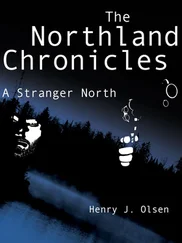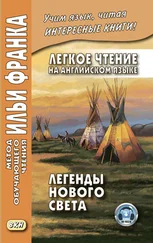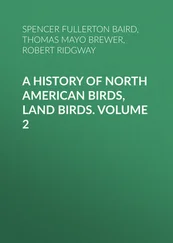North American Agroforestry
Здесь есть возможность читать онлайн «North American Agroforestry» — ознакомительный отрывок электронной книги совершенно бесплатно, а после прочтения отрывка купить полную версию. В некоторых случаях можно слушать аудио, скачать через торрент в формате fb2 и присутствует краткое содержание. Жанр: unrecognised, на английском языке. Описание произведения, (предисловие) а так же отзывы посетителей доступны на портале библиотеки ЛибКат.
- Название:North American Agroforestry
- Автор:
- Жанр:
- Год:неизвестен
- ISBN:нет данных
- Рейтинг книги:4 / 5. Голосов: 1
-
Избранное:Добавить в избранное
- Отзывы:
-
Ваша оценка:
- 80
- 1
- 2
- 3
- 4
- 5
North American Agroforestry: краткое содержание, описание и аннотация
Предлагаем к чтению аннотацию, описание, краткое содержание или предисловие (зависит от того, что написал сам автор книги «North American Agroforestry»). Если вы не нашли необходимую информацию о книге — напишите в комментариях, мы постараемся отыскать её.
Explore the many benefits of alternative land-use systems with this incisive resource North American Agroforestry
North American Agroforestry
North American Agroforestry — читать онлайн ознакомительный отрывок
Ниже представлен текст книги, разбитый по страницам. Система сохранения места последней прочитанной страницы, позволяет с удобством читать онлайн бесплатно книгу «North American Agroforestry», без необходимости каждый раз заново искать на чём Вы остановились. Поставьте закладку, и сможете в любой момент перейти на страницу, на которой закончили чтение.
Интервал:
Закладка:
88 Nair, P. K. R. (1993). An introduction to agroforestry. Dordrecht, the Netherlands: Kluwer.
89 Nair, P. K. R., Buresh, R. J., Mugendi, D. N., & Latt, C. R. (1999). Nutrient cycling in tropical agroforestry systems: Myths and science. In L. E. Buck, J. P. Lassoie, & E. C. M. Fernandes (Eds.), Agroforestry in sustainable agricultural systems (pp. 1–31). Boca Raton, FL: CRC Press.
90 Nair, V. D., Nair, P. K. R., Kalmbacher, R. S., & Ezenwa, I. V. (2007). Reducing nutrient loss from farms through silvopastoral practices in coarse‐textured soils of Florida, USA. Ecological Engineering, 29, 192–199.
91 NeSmith, D. S., & Ritchie, J. T. (1992a). Effects of soil water deficits during tassel emergence on development and yield component of maize (Zea mays L.). Field Crops Research, 28, 251–256.
92 NeSmith, D. S., & Ritchie, J. T. (1992b). Short‐ and long‐term responses of corn to pre‐anthesis soil water deficit. Agronomy Journal, 84,107–113. https://doi.org/10.2134/agronj1992.00021962008400010021x
93 Ng, H. Y. F., Drury, C. F., Serem, V. K., Tan, C. S., & Gaynor, J. D. (2000). Modeling and testing of the effect of tillage, cropping and water management practices on nitrate leaching in clay loam soil. Agricultural Water Management, 43, 111–131.
94 Nowak, J., Blount, A., & Workman, S. (2002). Integrated timber, forage and livestock production: Benefits of silvopasture (UF/IFAS Circ. 1430). Gainesville, FL: Florida Cooperative Extension Service, Institute of Food and Agricultural Sciences, University of Florida.
95 Ong, C. K., Black, C. R., Marshall, F. M., & Corlett, J. E. (1996). Principles of resource capture and utilization of light and water. In C. K. Ong & P. Huxley (Eds.), Tree–crop interactions: A physiological approach (pp. 73–158). Wallingford, UK: CAB International.
96 Ong, C. K., Corlett, J. E., Singh, R. P., & Black, C. R. (1991). Above and belowground interactions in agroforestry systems. Forest Ecology and Management, 45, 45–57.
97 Ong, C. K., Deans, J. D., Wilson, J., Mutua, J., Khan, A. A. H., & Lawson, E. M. (1999). Exploring belowground complementarity in agroforestry using sap flow and root fractal techniques. Agroforestry Systems, 44, 87–103.
98 Orefice, J., Caroll, J., Conroy, D., & Ketner, L. (2017). Silvopasture practices and perspectives in the northeastern United States. Agroforestry Systems, 91, 149–160.
99 Pang, K., Van Sambeek, J. W., Navarrete‐Tindall, N. E., Lin, C.‐H., Jose, S., & Garrett, H. E. (2019a). Responses of legumes and grasses to non‐, moderate, and dense shade in Missouri, USA: I. Forage yield and its species‐level plasticity. Agroforestry Systems, 93, 11–24. https://doi.org/10.1007/s10457‐017‐0067‐8
100 Pang, K., Van Sambeek, J. W., Navarrete‐Tindall, N. E., Lin, C.‐H., Jose, S., & Garrett, H. E. (2019b). Responses of legumes and grasses to non‐, moderate, and dense shade in Missouri, USA: II. Forage quality and its species‐level plasticity. Agroforestry Systems, 93:25–38. https://doi.org/10.1007/s10457‐017‐0068‐7
101 Pardon, P., Reheul, D., Mertens, J., Reubens, B., De Frenne, P., De Smedt, P., . . .Verheyen, K. (2019). Gradients in abundance and diversity of ground dwelling arthropods as a function of distance to tree rows in temperate arable agroforestry systems. Agriculture, Ecosystems & Environment, 270, 114–128.
102 Passarge, J., Hol, S., Escher, M., & Huisman, J. (2006). Competition for nutrients and light: Stale coexistence, alternative stable states, or competitive exclusion? Ecological Monographs, 76, 57–72. https://doi.org/10.1890/04‐1824
103 Penuelas, J., & Filella, I. (2003). Deuterium labeling of roots provides evidence of deep water access and hydraulic lift by Pinus nigra in a Mediterranean forest of NE Spain. Environmental and Experimental Botany, 49, 201–208. https://doi.org/10.1016/S0098‐8472(02)00070‐9
104 Poore, J., & Nemecek, T. (2018). Reducing food’s environmental impacts through producers and consumers. Science, 360, 987–992.
105 Powell, G. W., & Bork, E. W. (2006). Aspen canopy removal and root trenching effects on understory vegetation. Forest Ecology and Management, 230, 79–90.
106 Quinteros, C. P., Bava, J. O., Bernal, P. M. L., Gobbi, M. E., & Defosse, G. E. (2017). Competition effects of grazing‐modified herbaceous vegetation on growth, survival and water relations of lenga (Nothofagus pumilio) seedlings in a temperate forest of Patagonia, Argentina. Agroforestry Systems, 91, 597–611.
107 Ramsey, C. L., & Jose, S. (2002). Management challenges of pecan and pine based alley cropping systems of the Southern United States. In W. Schroder & J. Kort (Eds.), Temperate agroforestry: Adaptive and mitigative roles (pp. 158–163). Regina, SK, Canada: Plains and Prairie Forestry Association.
108 Reynolds, P. E., Simpson, J. A., Thevathasan, N. V., & Gordon, A. M. (2007). Effects of tree competition on corn and soybean photosynthesis, growth, and yield in a temperate tree‐based agroforestry intercropping system in southern Ontario, Canada. Ecological Engineering, 29, 362–371.
109 Rivest, D., & Vézina, A. (2015). Maize yield patterns on the leeward side of tree windbreaks are site‐specific and depend on rainfall conditions in eastern Canada. Agroforestry Systems, 89, 237–246.
110 Robin, C., Hay, M. J. M., Newton, P. C. D., & Greer, D. H. (1994). Effect of light quality (red:far‐red ratio) at the apical bud of the main stolon on morphogenesis of Trifolium repens L. Annals of Botany, 74, 119–123.
111 Root, R. (1973). Organization of a plant–arthropod association in simple and diverse habitats: The fauna of collards (Brassica oleracea). Ecological Monographs, 43, 95–124.
112 Sanchez, P. A. (2002). Soil fertility and hunger in Africa. Science, 295, 2019–2020.
113 Schroth, G. (1999). A review of belowground interactions in agroforestry, focusing on mechanisms and management options. Agroforestry Systems, 43, 5–34.
114 Seiter, S., Ingham, E. R., William, R. D., & Hibbs, D. E. (1995). Increase in soil microbial biomass and transfer of nitrogen from alder to sweet corn in an alley cropping system. In J. H. Ehrenreich, D. L. Ehrenreich, & H. W. Lee (Eds.), Growing a sustainable future (pp. 56–158). Boise, ID: University of Idaho.
115 Shainsky, L. J., & Radosevich, S. R. (1992). Mechanisms of competition between Douglas‐fir and red alder seedlings. Ecology, 73, 30–45.
116 Sharrow, S. H. (1999). Silvopastoralism: Competition and facilitation between trees, livestock, and improved grass–clover pastures on temperate rainfed lands. In L. E. Buck, J. Lassoie, & E. C. M. Fernandez (Eds.), Agroforestry in sustainable agricultural systems (pp. 111–130). Boca Raton, FL: CRC Press.
117 Silva‐Pando, F. J., Gonzalez‐Hernandez, M. P., & Rozados‐Lorenzo, M. J. (2002). Pasture production in a silvopastoral system in relation with microclimate variables in the Atlantic coast of Spain. Agroforestry Systems, 56, 203–211.
118 Singh, R. P., Ong, C. K., & Saharan, N. (1989). Above and below ground interactions in alley cropping in semiarid India. Agroforestry Systems, 9, 259–274.
119 Smil, V. (1999). Nitrogen in crop production: An account of global flows. Global Biogeochemical Cycles, 13, 647–662.
120 Smil, V. (2000). Phosphorus in the environment: Natural flows and human interferences. Annual Review of Energy and the Environment, 25, 53–88.
121 Smith, M. W., Arnold, D. C., Eikenbary, R. D., Rice, N. R., Shiferaw, A., Cheary, B. S., & Carroll, B.L. (1996). Influence of ground cover on beneficial arthropods in pecan. Biological Control, 6, 164–176.
122 Smith, M. W., Wolf, M. E., Cheary, B. S., & Carroll, B. L. (2001). Allelopathy of bermudagrass, tall fescue, redroot pigweed, and cutleaf evening primrose on pecan. HortScience, 36, 1047–1048.
Читать дальшеИнтервал:
Закладка:
Похожие книги на «North American Agroforestry»
Представляем Вашему вниманию похожие книги на «North American Agroforestry» списком для выбора. Мы отобрали схожую по названию и смыслу литературу в надежде предоставить читателям больше вариантов отыскать новые, интересные, ещё непрочитанные произведения.
Обсуждение, отзывы о книге «North American Agroforestry» и просто собственные мнения читателей. Оставьте ваши комментарии, напишите, что Вы думаете о произведении, его смысле или главных героях. Укажите что конкретно понравилось, а что нет, и почему Вы так считаете.












